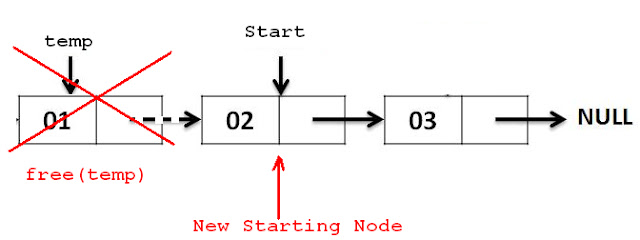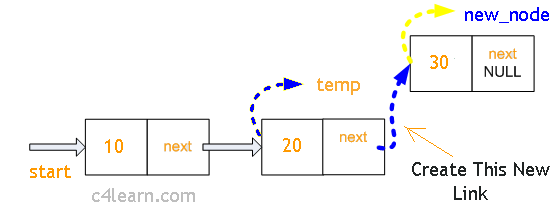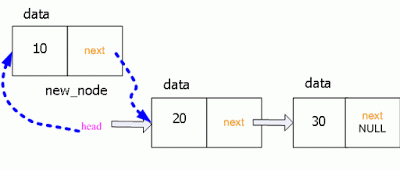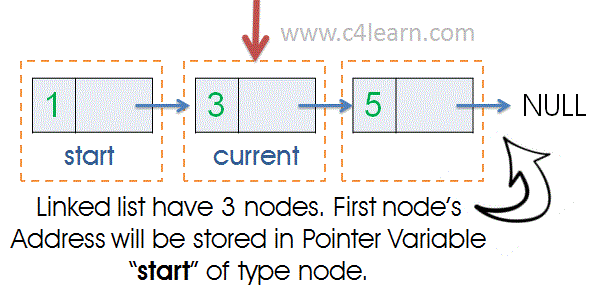C Program to Create Singly Linked List .using Node Structure
Program to Create Singly Linked List .
More Detailed Step By Step Explanation
//Program by :- Pritesh A Taral #include<stdio.h> #include<conio.h> #include<alloc.h> //------------------------------------------------- struct node { int data; struct node *next; }*start=NULL; //------------------------------------------------------------ void creat() { char ch; do { struct node *new_node,*current; new_node=(struct node *)malloc(sizeof(struct node)); printf("nEnter the data : "); scanf("%d",&new_node->data); new_node->next=NULL; if(start==NULL) { start=new_node; current=new_node; } else { current->next=new_node; current=new_node; } printf("nDo you want to creat another : "); ch=getche(); }while(ch!='n'); } //------------------------------------------------------------------ void display() { struct node *new_node; printf("The Linked List : n"); new_node=start; while(new_node!=NULL) { printf("%d--->",new_node->data); new_node=new_node->next; } printf("NULL"); } //---------------------------------------------------- void main() { create(); display(); } //----------------------------------------------------
Output :
Enter the data : 10 Do you want to creat another : y Enter the data : 20 Do you want to creat another : y Enter the data : 30 Do you want to creat another : n The Linked List : 10--->20--->30--->NULL








